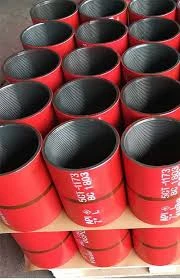- Afrikaans
- Albanian
- Amharic
- Arabic
- Armenian
- Azerbaijani
- Basque
- Belarusian
- Bengali
- Bosnian
- Bulgarian
- Catalan
- Cebuano
- Corsican
- Croatian
- Czech
- Danish
- Dutch
- English
- Esperanto
- Estonian
- Finnish
- French
- Frisian
- Galician
- Georgian
- German
- Greek
- Gujarati
- Haitian Creole
- hausa
- hawaiian
- Hebrew
- Hindi
- Miao
- Hungarian
- Icelandic
- igbo
- Indonesian
- irish
- Italian
- Japanese
- Javanese
- Kannada
- kazakh
- Khmer
- Rwandese
- Korean
- Kurdish
- Kyrgyz
- Lao
- Latin
- Latvian
- Lithuanian
- Luxembourgish
- Macedonian
- Malgashi
- Malay
- Malayalam
- Maltese
- Maori
- Marathi
- Mongolian
- Myanmar
- Nepali
- Norwegian
- Norwegian
- Occitan
- Pashto
- Persian
- Polish
- Portuguese
- Punjabi
- Romanian
- Russian
- Samoan
- Scottish Gaelic
- Serbian
- Sesotho
- Shona
- Sindhi
- Sinhala
- Slovak
- Slovenian
- Somali
- Spanish
- Sundanese
- Swahili
- Swedish
- Tagalog
- Tajik
- Tamil
- Tatar
- Telugu
- Thai
- Turkish
- Turkmen
- Ukrainian
- Urdu
- Uighur
- Uzbek
- Vietnamese
- Welsh
- Bantu
- Yiddish
- Yoruba
- Zulu
casing pup joint
Understanding Casing Pup Joints An Essential Component in Oil and Gas Operations
In the oil and gas industry, the efficient and safe transportation of fluids is paramount. One often-overlooked component in this complex system is the casing pup joint. While it may seem like a minor detail, the casing pup joint plays a crucial role in the overall functionality of wellbore construction and maintenance.
What is a Casing Pup Joint?
A casing pup joint is a short length of pipe connected to the casing string in a wellbore
. Typically ranging from 2 to 10 feet in length, these joints are used to adjust the total length of the casing or to accommodate specific design requirements. Casing pup joints are manufactured with the same specifications as standard casing pipes and are thus capable of withstanding similar pressures and environmental conditions.The Function of Casing Pup Joints
Casing pup joints serve several essential functions. First and foremost, they allow for flexibility in the design and layout of the well. In many cases, well geometries are not straightforward due to geological formations, resulting in the need for customized casing solutions. Casing pup joints can be strategically placed to optimize the well’s configuration, thus enhancing its performance and efficiency.
Additionally, casing pup joints are vital for making adjustments during the casing run. If operators find that they need more or less length than anticipated, pup joints provide a solution without the need to rework the entire casing string. This adaptability is crucial in ensuring that wells can be drilled and completed on time and within budget.
Material and Design Considerations
casing pup joint

The construction of casing pup joints typically involves high-strength steel manufactured to withstand the harsh conditions of the subsurface environment. They are coated or treated to resist corrosion and abrasion. The design of pup joints also considers factors such as pressure ratings, threading, and connection types to ensure compatibility with existing casing and drilling equipment.
Moreover, the integrity of the connections in pup joints is critical. Failures at these joints can lead to serious operational issues, including leaks and blowouts. Therefore, quality assurance processes are paramount during manufacturing to ensure safety and reliability.
Applications in Oil and Gas Industry
Casing pup joints are employed in various stages of drilling and production operations. They are particularly useful in vertical and horizontal drilling, where the precise length of casing may be contingent on specific geological formations. Additionally, pup joints are utilized during the completion phase of wells to facilitate the installation of production tubing or to manage wellhead configurations.
In essence, the significance of casing pup joints extends beyond their physical dimensions. They are instrumental in enhancing operational efficiency, ensuring safety, and adapting to the unique challenges presented by different well environments.
Conclusion
In summary, casing pup joints are vital components in the oil and gas industry that facilitate the effective construction and maintenance of wellbores. Their ability to provide flexibility and adaptability makes them indispensable in successful drilling operations. As the industry continues to evolve and demands for efficiency increase, the role of casing pup joints will remain critical in ensuring that wells are completed safely and effectively. Understanding their importance can lead to better management of resources and improved operational outcomes in the dynamic world of oil and gas exploration.
-
Tubing Pup Joints: Essential Components for Oil and Gas OperationsNewsJul.10,2025
-
Pup Joints: Essential Components for Reliable Drilling OperationsNewsJul.10,2025
-
Pipe Couplings: Connecting Your World EfficientlyNewsJul.10,2025
-
Mastering Oilfield Operations with Quality Tubing and CasingNewsJul.10,2025
-
High-Quality Casing Couplings for Every NeedNewsJul.10,2025
-
Boost Your Drilling Efficiency with Premium Crossover Tools & Seating NipplesNewsJul.10,2025







